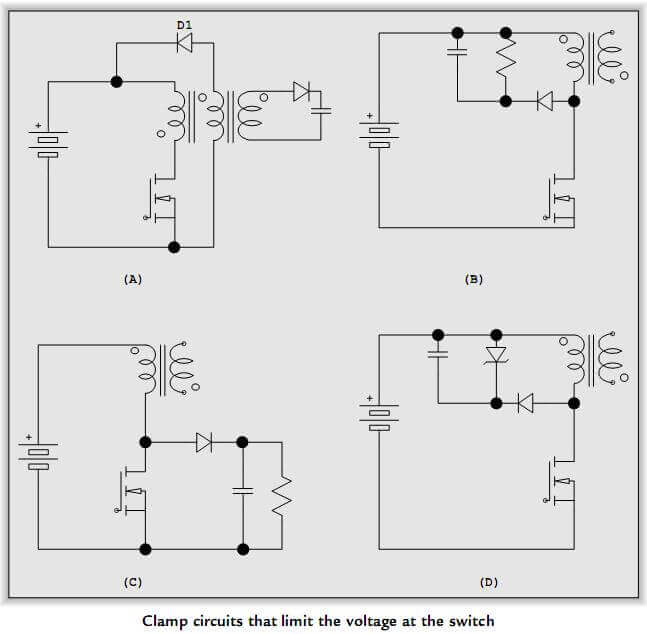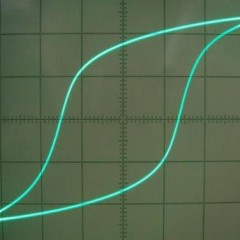What is self-induction - simple words
Definition
Self-induction is the appearance in the conductor of an electromotive force (EMF) directed in the opposite direction relative to the voltage of the power source when current flows. Moreover, it arises at the moment when the current strength in the circuit changes. A changing electric current generates a changing magnetic field, which in turn induces an EMF in the conductor.
This is similar to the formulation of the law of electromagnetic induction of Faraday, where it says:
When a magnetic flux passes through a conductor, an emf appears in the latter. It is proportional to the rate of change of the magnetic flux (mat. Time derivative).
I.e:
E = dF / dt,
Where E is the self-induction EMF, measured in volts, F is the magnetic flux, the unit of measurement is Wb (Weber, it is also equal to V / s)
Inductance
We have already said that self-induction is inherent in inductive circuits, therefore, we consider the phenomenon of self-induction using an example of an inductor.
An inductor is an element that is a coil of an insulated conductor. To increase the inductance, the number of turns is increased or a core of soft magnetic or other material is placed inside the coil.
The unit of inductance is Henry (GN). Inductance characterizes how strongly the conductor counteracts electric current. Since a magnetic field is formed around each conductor through which current flows, and if you place the conductor in an alternating field, a current will appear in it. In turn, the magnetic fields of each coil turn are added. Then a strong magnetic field will appear around the coil through which the current flows. When changing its strength in the coil, the magnetic flux around it will also change.
According to the law of Faraday’s electromagnetic induction, if the coil is pierced by an alternating magnetic flux, then a current and self-induction EMF will appear in it. They will impede the current flowing in the inductance from the power source to the load. They are also called extracurrents of EMF self-induction.
The formula for the self-induction EMF on the inductance is:
That is, the greater the inductance, and the more and faster the current changes, the stronger the surge in the emf will be.
With increasing current in the coil, an EMF of self-induction occurs, which is directed against the voltage of the power source, respectively, the increase in current will slow down.The same happens when decreasing - self-induction will lead to the appearance of an EMF, which will maintain the current in the coil in the same direction as before. It follows that the voltage at the terminals of the coil will be opposite to the polarity of the power source.
In the figure below, you see that when you turn on / off the inductive circuit, the current does not sharply arise, but changes gradually. This is also indicated by the laws of switching.
Another definition of inductance is as follows: the magnetic flux is proportional to the current, but in its formula the inductance acts as a proportionality coefficient.
F = L * I
Transformer and mutual induction
If you place two coils in close proximity, for example, on the same core, then the phenomenon of mutual induction will be observed. Let's skip alternating current in the first, then its alternating flow will penetrate the turns of the second and EMF will appear on its terminals.
This EMF will depend on the length of the wire, respectively, the number of turns, as well as on the magnitude of the magnetic permeability of the medium. If they are simply placed next to each other, the EMF will be low, and if you take a core made of magnetically soft steel, the EMF will be much larger. Actually, this is how the transformer is arranged.
Interesting: this mutual influence of the coils on each other is called inductive coupling.
Benefit and harm
If you understand the theoretical part, it is worth considering where the phenomenon of self-induction is applied in practice. Consider the examples of what we see in everyday life and technology. One of the most useful applications is a transformer, we have already considered the principle of its operation. Now less and less common, but previously daily fluorescent tubes were used in luminaires. The principle of their work is based on the phenomenon of self-induction. You can see her diagrams below.
After applying voltage, the current flows through the circuit: phase - inductor - spiral - starter - spiral - zero.
Or vice versa (phase and zero). After the starter is activated, its contacts open, then throttle (a coil with a large inductance) seeks to maintain current in the same direction, induces a large-magnitude self-induction EMF and the lamps are ignited.
Similarly, this phenomenon applies to the ignition circuit of a car or motorcycle that run on gasoline. In them, a mechanical (interrupter) or semiconductor switch (transistor in the computer) is installed in the gap between the inductor and the minus (ground). This key, at the moment when a spark should form in the cylinder to ignite the fuel, breaks the power supply circuit of the coil. Then the energy stored in the core of the coil causes an increase in the emf of self-induction and the voltage on the electrode of the candle increases until a breakdown of the spark gap occurs, or until the coil burns out.
In power supplies and audio equipment, it is often necessary to remove excess ripple, noise or frequency from the signal. For this, filters of different configurations are used. One option is LC, LR filters. Due to the obstacle to the growth of current and the resistance of alternating current, respectively, it is possible to achieve the goals.
Self-induction EMF is harmful to contacts of switches, circuit breakers, sockets, automatic machines and other things. You may have noticed that when you pull the plug of a working vacuum cleaner out of the socket, a flash inside it is very often noticeable. This is the resistance to changing the current in the coil (motor winding in this case).
In semiconductor switches, the situation is more critical - even a small inductance in the circuit can lead to their breakdown when the peak values of Uke or Usi are reached. To protect them, snubber circuits are installed, on which the energy of inductive bursts is dissipated.
Conclusion
To summarize. The conditions for the emergence of EMF self-induction is: the presence of inductance in the circuit and the change in current in the load. This can occur both in operation, when changing modes or disturbing influences, and when switching devices.This phenomenon can damage the contacts of relays and starters, as it leads to arcing when opening inductive circuits, for example, electric motors. To reduce the negative impact, most of the switching equipment is equipped with arcing chambers.
For useful purposes, the EMF phenomenon is used quite often, from a filter to smooth current ripples and a frequency filter in audio equipment, to transformers and high-voltage ignition coils in cars.
Finally, we recommend watching a useful video on a topic that briefly and in detail examines the phenomenon of self-induction:
We hope that now it has become clear to you what self-induction is, how it manifests itself and where it can be used. If you have questions, ask them in the comments under the article!
Related materials:

















